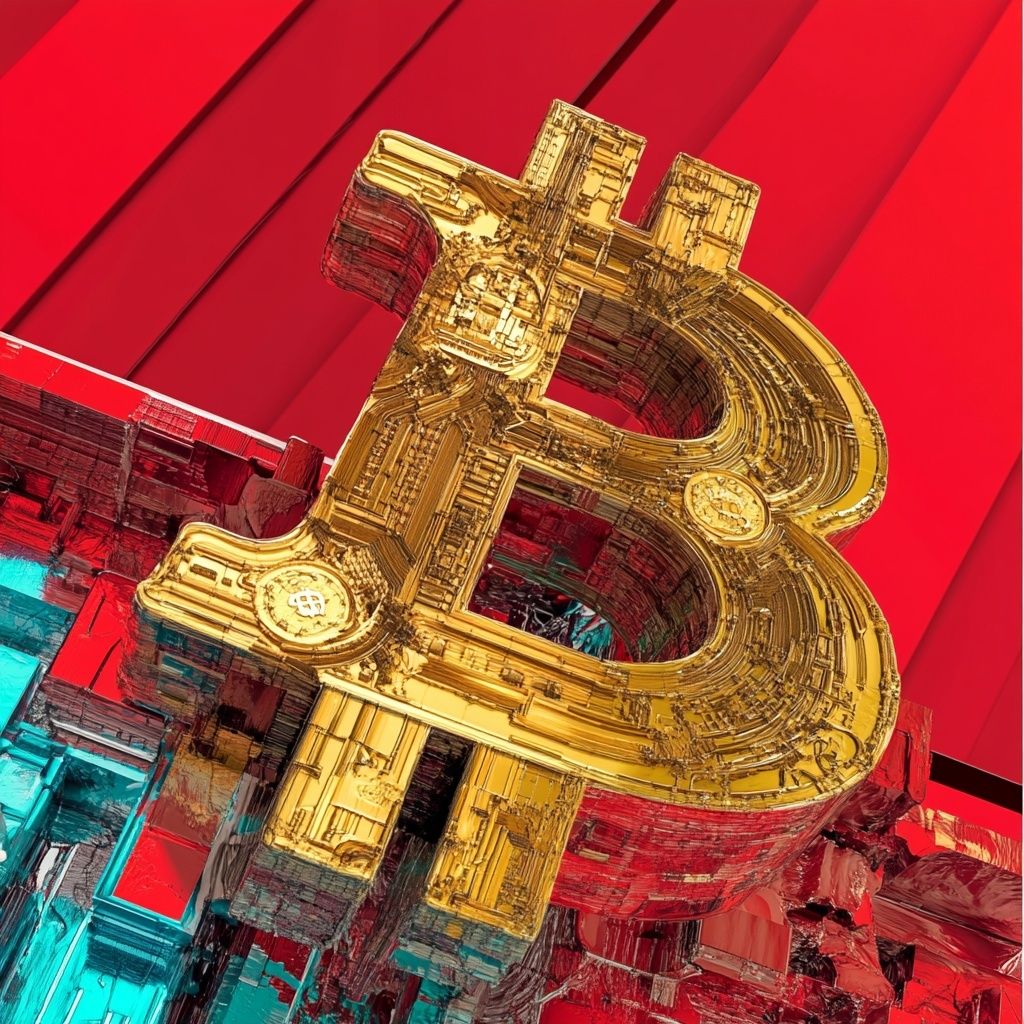AI Bubble Panic: Tech Stocks Crash, Bitcoin Follows Below $122K
AI Bubble Panic — Tech Stocks Crash, Bitcoin Follows Below $122K
Wall Street’s love affair with AI just hit turbulence. As tech stocks slide and fear spreads, Bitcoin tumbles in sympathy — proving once again that macro rules the game.
⚡ Quick Hits
- 📉 S&P 500 drops 1% — worst day in over a month
- 🤖 AI stocks plunge: Synopsys, Micron, Qualcomm lead sell-off
- 🚨 Bitcoin falls below $122K, hitting $107,941 intraday
- 🪙 Ethereum dips under $4,600
- 📊 BTC volume down 42% — risk appetite collapsing
- 💥 Coinbase, MicroStrategy post double-digit losses
💻 The AI Hype Hangover
The U.S. stock market took a hard hit on October 10, 2025, as tech stocks led a sharp sell-off — dragging the entire risk complex down with them. The S&P 500 fell over 1%, marking its steepest single-day loss in weeks, amid growing fears that the AI boom has gone too far, too fast.
Investors are now asking the question no one wanted to face: Is the AI rally a revolution — or a bubble?
Analysts warn that AI valuations have reached dot-com levels, with multitrillion-dollar market caps floating on hype, not productivity.
“The intertwined nature of AI hype, policy indecision, and global strife is amplifying market fears,” said Sarah Lee, economist at Future Insights Group. “We may be heading toward a major recalibration.”
🧠 Déjà Vu: The Dot-Com Parallel
When the dot-com bubble burst in 2000, investors learned the hard way that innovation doesn’t always equal revenue. Now, two decades later, AI — fueled by autonomous systems, chip giants, and agentic software — may be reaching the same boiling point.
Bitcoin, often marketed as “digital gold,” didn’t escape the contagion. It plunged below $122,000, briefly touching $107,941, while Ethereum slipped under $4,600. Coinbase and MicroStrategy sank double digits as crypto-exposed equities were hit by the risk-off wave.
Trading data showed Bitcoin’s 24-hour volume dropped 42%, signaling hesitation even among long-term holders.
📉 When Wall Street Sneezes, Web3 Catches a Cold
This wasn’t a crypto crash — it was a macro storm. As AI mania cools and policy uncertainty rises, traders dumped risk across the board: stocks, commodities, and crypto alike.
DeFi and exchange tokens followed the same trajectory, wiping out weeks of “Uptober” gains.
The correlation between traditional and digital markets is now undeniable. The crypto winter and AI correction may be separate stories — but they rhyme.
🌍 Geopolitics & Inflation: The Hidden Pressure
Beyond the AI sell-off, macro headwinds are back in focus. Unclear policies across major economies and renewed inflation anxiety have reignited flight-to-safety behavior.
Institutional funds are rotating out of growth and back into defensive sectors — a move that historically punishes both tech and crypto.
The optimism that defined early 2025 is being replaced by macro caution and liquidity tightening.
⚠️ Caution in the Age of AI
Market strategists now expect higher volatility as both sectors recalibrate. If the S&P 500 continues sliding, digital assets could face another leg down — especially as institutions rebalance portfolios toward safer plays.
While optimists call this a buy-the-dip moment for “real” AI and blockchain assets, skeptics warn the “AI bubble” narrative could dominate into 2026 unless earnings catch up to valuations.
“Even innovation cycles overheat,” one analyst quipped. “When they cool, both Wall Street and Web3 feel the chill.”
🧠 Bigger Picture
The October 10 sell-off is a wake-up call. AI and crypto are no longer fringe narratives — they’re now macro assets, moving with the global pulse of risk and liquidity.
The convergence is clear: When Wall Street breathes out, Web3 exhales.
TL;DR
- 🤖 AI bubble fears trigger broad market sell-off
- 📉 S&P 500 down 1%, worst day in a month
- 🪙 Bitcoin drops below $122K, Ethereum under $4.6K
- 💥 Crypto equities post double-digit losses
- 🌍 Macro pressure + overvaluation = synchronized decline
- 🧠 Lesson: AI and crypto are now part of the same risk cycle

Recent News
All Time High • Live
Have questions or want to collaborate? Reach us at: info@ath.live











